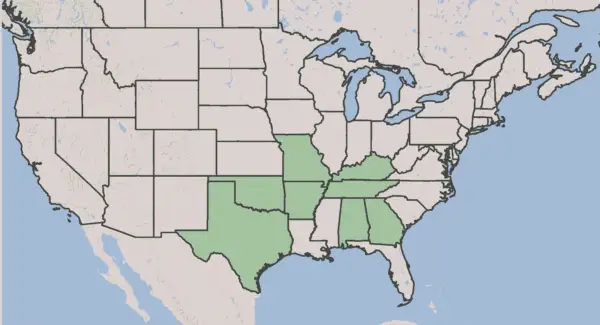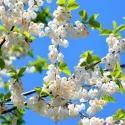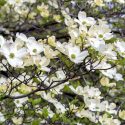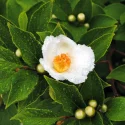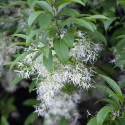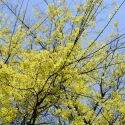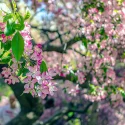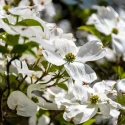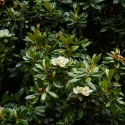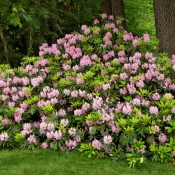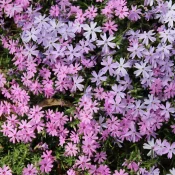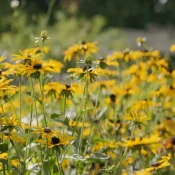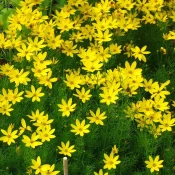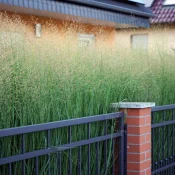Smoke Tree
The native Smoke Tree is not named for its flowers, but for what it looks like after it flowers. After the tree flowers in the late spring, the leftover airy and wispy flower stems stay, looking like a second flowering. And that’s not all. In the fall, the leaves turn into a beautiful riot of kaleidoscopic color. They stay small—around 30 feet tall—making them perfect statement trees. Smoke Trees are not appreciated and planted enough in North America! Let’s plant some and change this trend. Scroll on for planting tips.
- Full Sun, Part Sun
- Small Tree (15-30')
- Spring flowers
- Amazing fall color
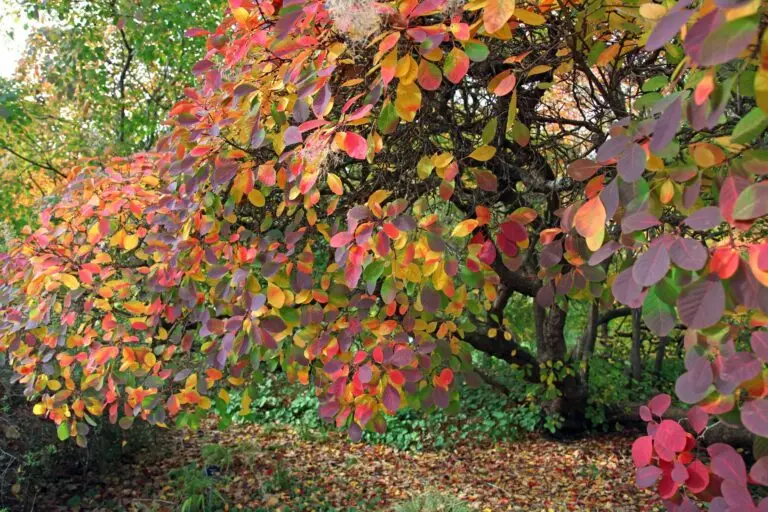
What are the benefits of planting a native Smoke Tree?
Planting native plants makes our yards and spaces gorgeous while helping the birds, butterflies, and animals (and helping save us time!) Here are four reasons why planting a native Smoke Tree is worth it:
- Without native plants, iconic animals like Monarch butterflies and songbirds won’t have the food or homes needed to survive
- Native plants save time and money: after the first year of getting established, native plants are happy with rain
- Native plants are the easiest plants to grow! A Smoke Tree is a perfect example of how easy it is to plant native: read on to learn how little work native Smoke Trees require to thrive.
- Native Smoke Trees transform from spring to summer and again in fall, offering cinematic beauty with minimal work.
What is the difference between native and non-native smoke trees?
As you visit nurseries and gardens, you may notice another species of smoke tree available. More often than not, this other species is the non-native smoke tree (Cotinus coggygria), which is native to Europe and parts of Asia. The two species both have the smokey flowers, but one gets larger than the other and only our native smoke tree puts on the purple-red-orange show in the fall.
Here is a quick overview of the two plants:
American Smoke Tree
Cotinus obovatus
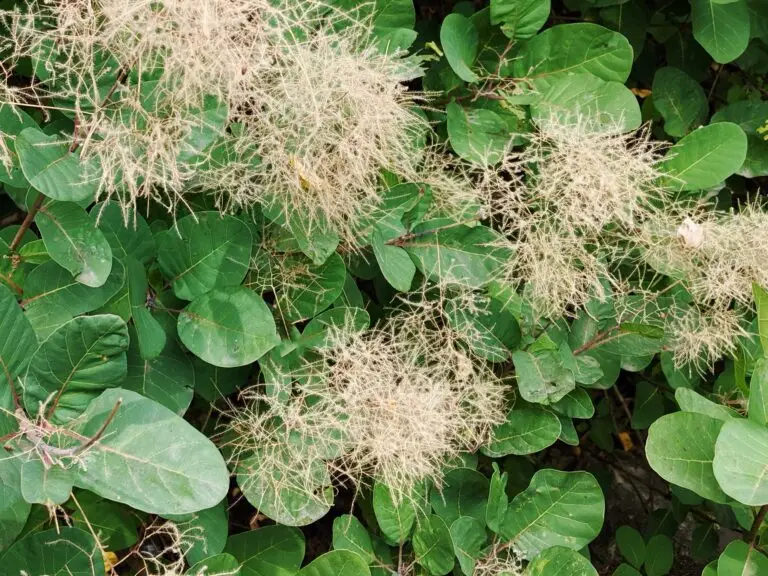
- Native to North America
- “Smokey” white-pinkish flowers
- Small tree
- Thrives in a wide range of weather
- Larger leaves
- Rainbow fall foilage
Eurasian Smoke Tree
Cotinus coggygria
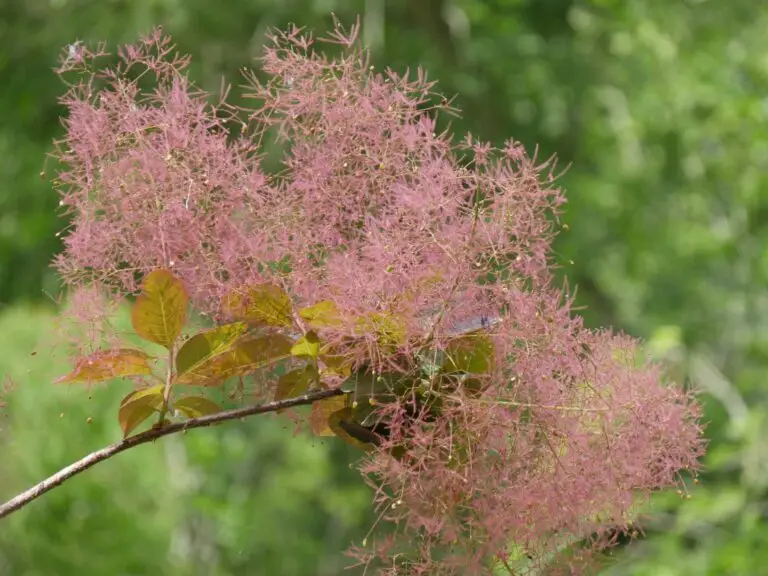
- Native to Europe and Asia
- “Smokey” pink flowers
- Large shrub
- Can die in cold temps
- Smaller leaves
- Single color fall foliage
Native Smoke Trees are one of the easiest trees to plant
Smoke Trees are easy to plant and care for. “Basically, this tree can be planted and forgotten. Once established, it thrives on neglect” is how this tree is described in Landscaping with Native Trees.
American Smoke Trees are easy to transplant
The Morton Arboretum shares how easy they are to transplant, thanks to their shallow root system.
Where are Smoke Trees native?
Smoke trees are native to the Midwest and South. Due to climate change, these trees are now found thriving in the Northeast and Mid-Atlantic. (In fact, the national champion Smoke Tree—or the largest native smoke tree alive—is in Connecticut!)
Iowa State University, Department of Horticulture made a great 2-minute video overview of the American Smoke Tree and gives some helpful quick comparisons to the non-native Smoke Tree:
Where can I find a Smoke Tree to plant?
Sadly, finding native plants like Smoke Trees can be difficult at conventional nurseries. But don’t let the challenge stand in your way! Here are four ideas for finding native plants like Smoke Trees in your area:
Where can I find seeds and plants?
Finding native plants can be challenging (we partly blame Marie Antoinette.) To make it easier, we’ve assembled four sourcing ideas.
Native Nursery List
300+ native nurseries makes finding one a breeze
Online Native Plant Sellers
We've included 100+ online resources to help
Society Plant Sales
Every state has a native plant society; find yours
Online Communities
Local Facebook groups are a great plant source
What are other flowering native trees?
Dozens of native flowering trees look amazing and require minimal work (especially compared to lawns.) If you’re looking for a front yard statement tree, visit our guide to the best native trees for front yards for a wide variety of ideas.
Some great flowering native trees to consider include:
What are good Smoke Tree pairings?
Besides the other native flowering trees mentioned above, there are lots of shrubs and native perennials that pair beautifully with native Smoke Trees. Because Smoke Trees like full to part sun, pair them with other natives that enjoy this same sunny locale. Ideas for pairings include:
Native Shrub Pairings
Native Flower Pairings
And now you’re ready to plant a North American Smoke Tree! These native gems have been hiding in plain sight beside their non-native cousins. But few plants—native or not—can beat the American Smoke Trees show in the fall. These are perfect statement trees for any gardener, and thanks to their fuss-free nature, they are especially good for beginner gardeners. Happy planting!
Sources
- Nelson, Gil. Best Native Plants for Southern Gardens: A Handbook for Gardeners, Homeowners, and Professionals, (2010).
- Harstad, Carolyn. Go Native! Gardening with Native Plants and Wildflowers in the Lower Midwest. (1999), 209-210.
